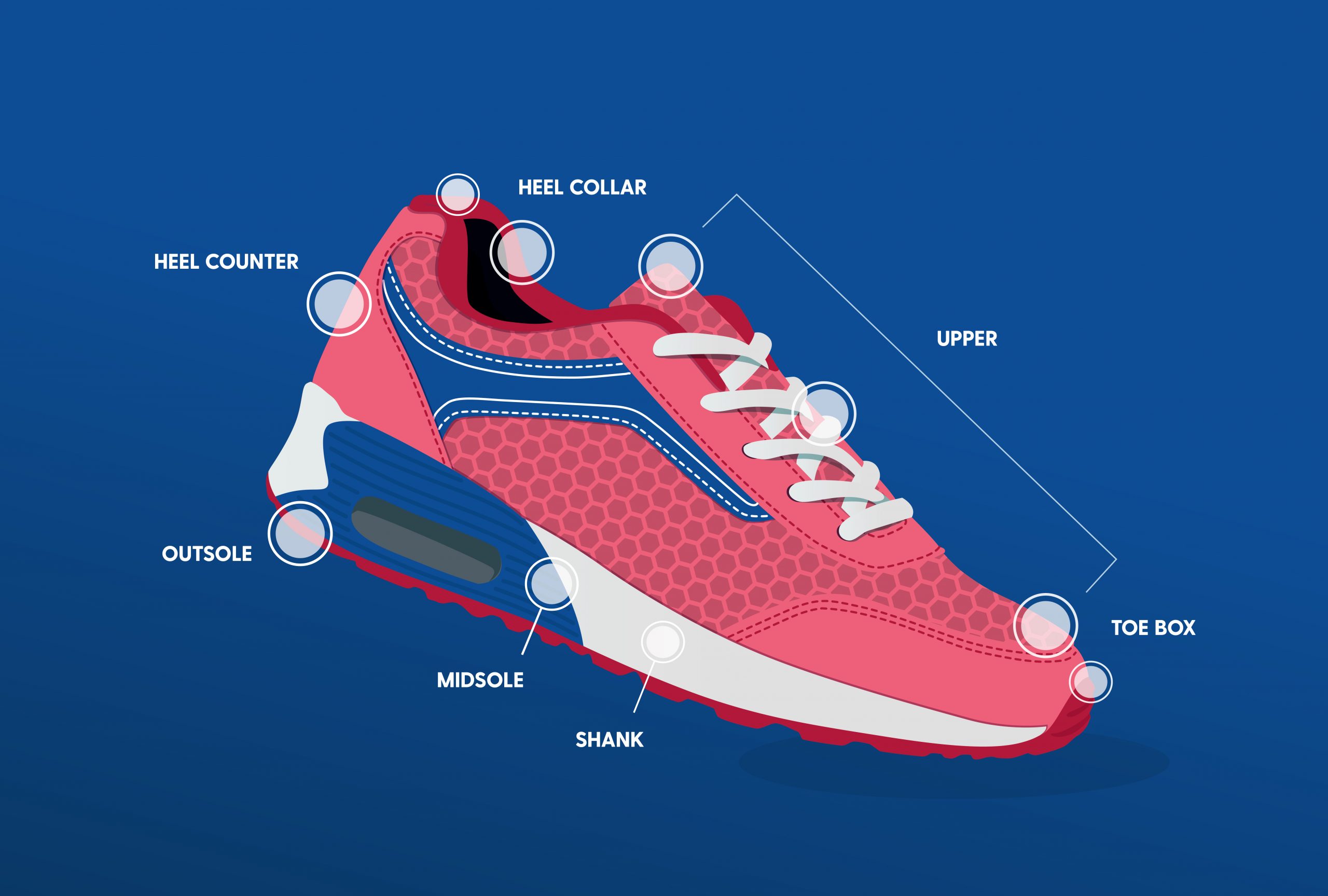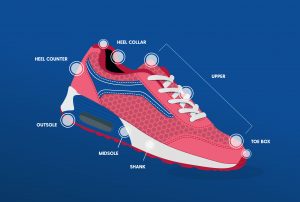
 Worn-out running shoes don’t just lack the support, protection and comfort they once used to – they may make you vulnerable to injury, and reduce the efficiency of your orthotics. As ‘how long do running shoes last’ and ‘is it time to replace my shoes’ are two very common questions asked of our podiatrists during patient appointments, today we’ve put together our top five signs that it’s time to get some new runners ASAP.
Worn-out running shoes don’t just lack the support, protection and comfort they once used to – they may make you vulnerable to injury, and reduce the efficiency of your orthotics. As ‘how long do running shoes last’ and ‘is it time to replace my shoes’ are two very common questions asked of our podiatrists during patient appointments, today we’ve put together our top five signs that it’s time to get some new runners ASAP.
The Midsole Is Compressed
The midsole is the thick area beneath the heel and midfoot. It plays an incredibly important role in stabilising and cushioning the foot, helping it absorb the strong impact forces during walking and running. The midsole naturally compresses over time because the structure of the foam that it’s made from can break down and compress.
If the midsole is compressed, you’ll likely see creases in the midsole as well as noticeable thinning and compression through the midsole. This means that your shoes will now be doing a much poorer job of helping support and stabilise your foot, while leaving your bones and the joints in the foot and up the leg taking on higher forces. This increases your vulnerability to injuries like plantar fasciitis, Achilles tendonitis and increased tibial stress.
The Heel Counter Is No Longer Firm
The heel counter is the firm part of the shoe that sits directly behind your heel. As the heel is the first part of the foot to come in contact with the ground during walking, it plays a big role in helping hold your heel firmly in place and increasing the stability of the foot in the shoe.
A good heel counter should not be able to be ‘pushed inwards or downwards’ with your thumb from the back of the heel. If this is compromised, the heel can easily move into a suboptimal position that may lead to excess pressure on certain parts of the foot that can cause pain and injury.

The Outsole Is Worn Down
Your outsole lasts longer than your shoes’ ability to effectively absorb shock and cushion the foot, so if you can see that your tread and the outsole is worn down then it’s a clear sign that it’s time for a new pair of runners and your current ones should be retired to the garden.
What may be even more dangerous is having one side of the outsole worn down so that the shoe slants either inwards or outwards. This can greatly exacerbate a foot that is naturally flat and rolls in, or is high-arched and rolls out, which can make it more vulnerable to the injuries and problems associated with that specific foot type. A good example is a high-arched foot that places more pressure on the outside of the foot and tends to wear out the outer edges over time. By doing so, this puts a foot that is already more vulnerable to ankle sprains from rolling outwards at a greater risk.
One Shoe Looks Significantly Different Than The Other
If one of your shoes looks significantly different than the other, you have a serious problem and without a doubt need a new pair of runners. This may look like significant wear on one shoe and not the other, obvious creasing, tears or damage to one shoe, and having one shoe feel springier than the other, as a few examples. As well as indicating and exacerbating a potential underlying problem with your gait, it can leave you vulnerable to injury while wearing the shoes.
As one of many scenarios, imagine that one of your shoes is worn down on the inside with more compression at the midsole, while the other shoe is fine. This can create a leg length difference as the height of the shoes will now vary, and the flatter foot that has worn down the inside of one shoe can also create a functional height difference.
Your Pain Or Discomfort Is Returning
This is a biggie. Remember that feeling when you put on your new pair of runners and it felt like you were walking on a cloud and your feet and legs felt so much comfier? That’s how your shoes should feel – and they should quickly get to work in helping you manage any aches, pains and problems that were previously being created by unsupportive shoes.
So, if after some time (approximately 700 – 900 kilometres) your niggles start creeping back and you haven’t done anything differently (like starting to train for a marathon), there’s a good chance that it’s your shoes that have stopped giving you the support they used to.
So You Need A New Pair Of Runners – But Where Do You Buy The Right Ones?
We could give recommendations for shoes that we think are great – but the reality is that it isn’t just about having good quality shoes – but having ones that are matched to your foot type and your gait characteristics. That’s why many of our My FootDr clinics also have footwear retail stores to help you get the best shoes for your feet. Both our podiatrists and retail assistants are specially trained to match your foot to the right shoe, regardless of whether you have an appointment with us or not.
You don’t need an appointment to check out our retail store – come on in anytime the clinic is open. If you’ve developed any pains from your footwear and need help from our podiatry team, book your appointment online by clicking here or call us on 1800 FOOTDR


